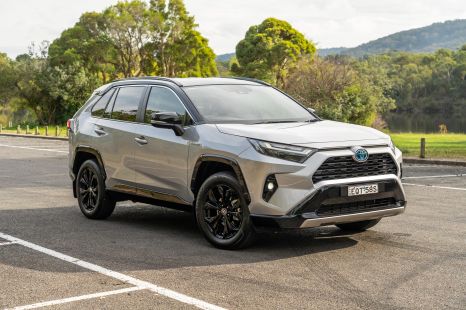

Jack Quick
2 Years Ago
View 45 images
Used from
$62,830 excl. on-roads
Review Rating
N/A
Safety Rating
NA
Warranty
5 year, unlimited km
Fuel Efficiency
7.9 / 100km
The Toyota LandCruiser Prado is a large 4x4 wagon that sits between the flagship LandCruiser 300 Series and the Hilux ute-based Fortuner in the brand's off-road SUV line-up.
Four trim levels are available in Australia: GX, GXL, VX and Kakadu. All models are powered by a 150kW/500Nm 2.8-litre turbo-diesel shared with the HiLux and Fortuner.
Switchable four-wheel drive is fitted as standard, mated with a six-speed automatic transmission.
The Prado is available with both five-seat (GX) and seven-seat interiors.
Quickly see how this car stacks up against its competition. Select any benchmark to see more details.
CarExpert does the hard work to get you the best price. No negotiating, no hidden costs, just expert help and real savings on your next new car.
| Configuration | Price From* |
|---|---|
| 2.8L, 6-speed auto, 5-door SUV, Diesel, 4x4 | $62,830 |
| Configuration | Price From* |
|---|---|
| 2.8L, 6-speed auto, 5-door SUV, Diesel, 4x4 | $69,530 |
| Configuration | Price From* |
|---|---|
| 2.8L, 6-speed auto, 5-door SUV, Diesel, 4x4 | $78,348 |
| 2.8L, 6-speed auto, 5-door SUV, Diesel, 4x4 | $76,848 |
| Configuration | Price From* |
|---|---|
| 2.8L, 6-speed auto, 5-door SUV, Diesel, 4x4 | $88,998 |
| 2.8L, 6-speed auto, 5-door SUV, Diesel, 4x4 | $87,468 |
CarExpert does the hard work to get you the best price. No negotiating, no hidden costs, just expert help and real savings on your next new car.
See our comprehensive details for the Toyota LandCruiser Prado
Cargo space comes in at 120 litres behind the third row with the third row in use, 620 litres with the third row folded into the floor and 1833 litres with the second row folded flat.
There’s a 230V power outlet in the rear too – very handy if you’re out camping.
CarExpert does the hard work to get you the best price. No negotiating, no hidden costs, just expert help and real savings on your next new car.
CarExpert High Resolution Photos of the Toyota LandCruiser Prado
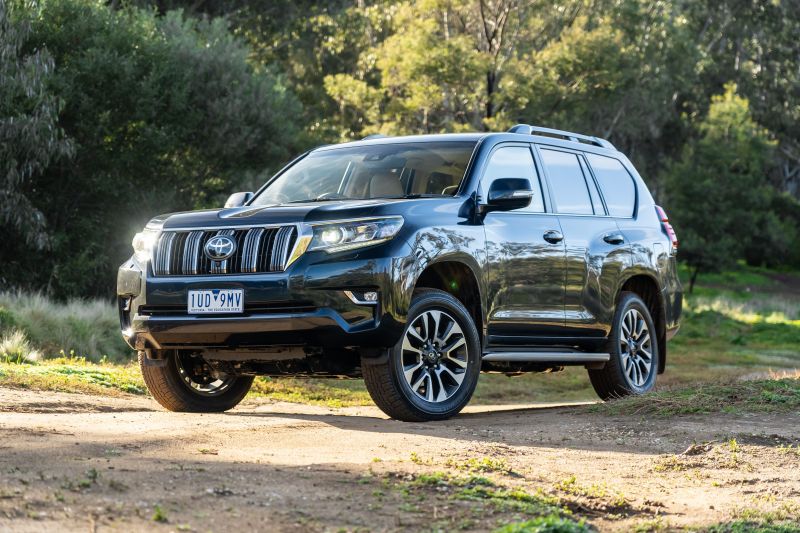
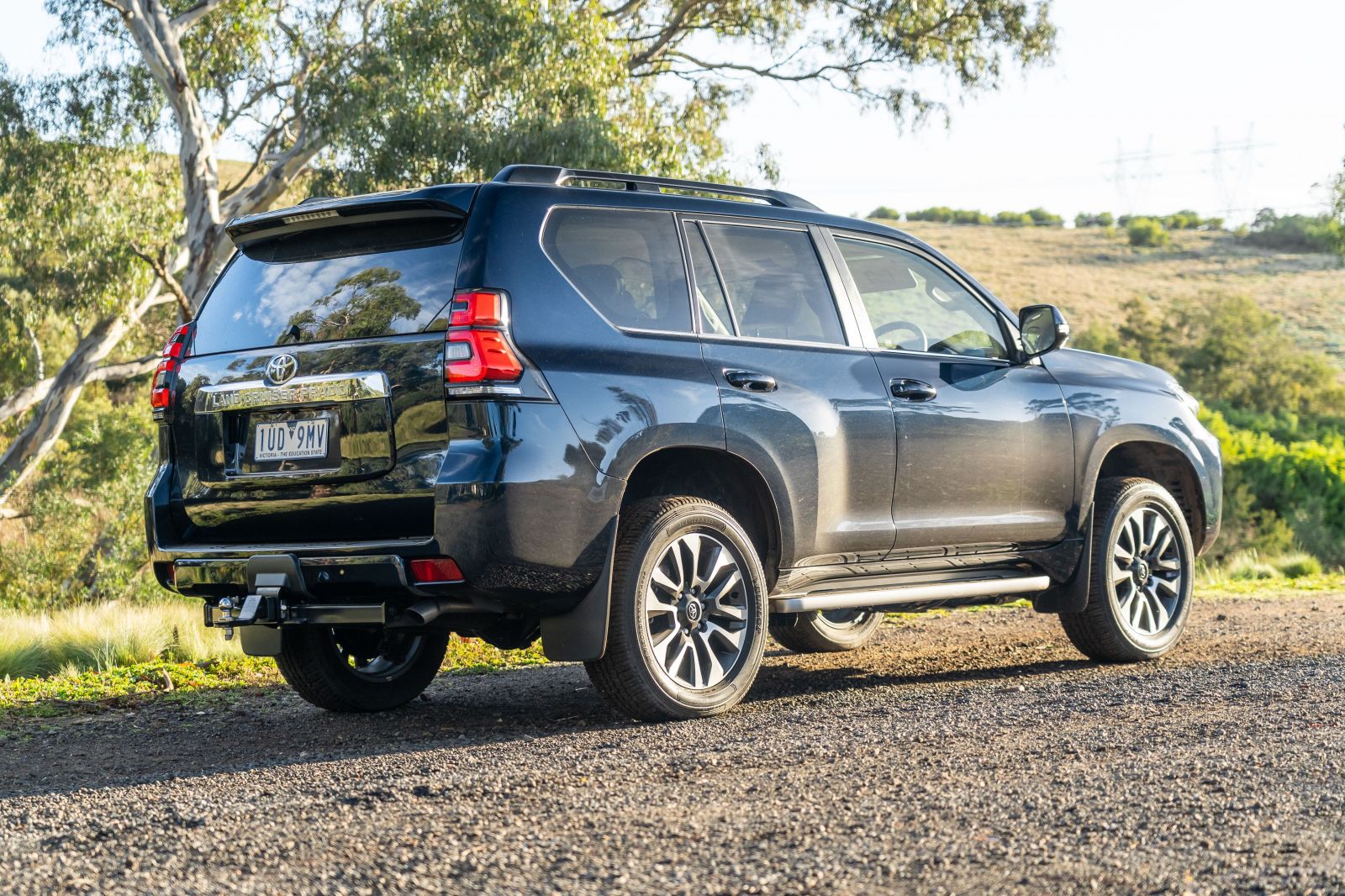
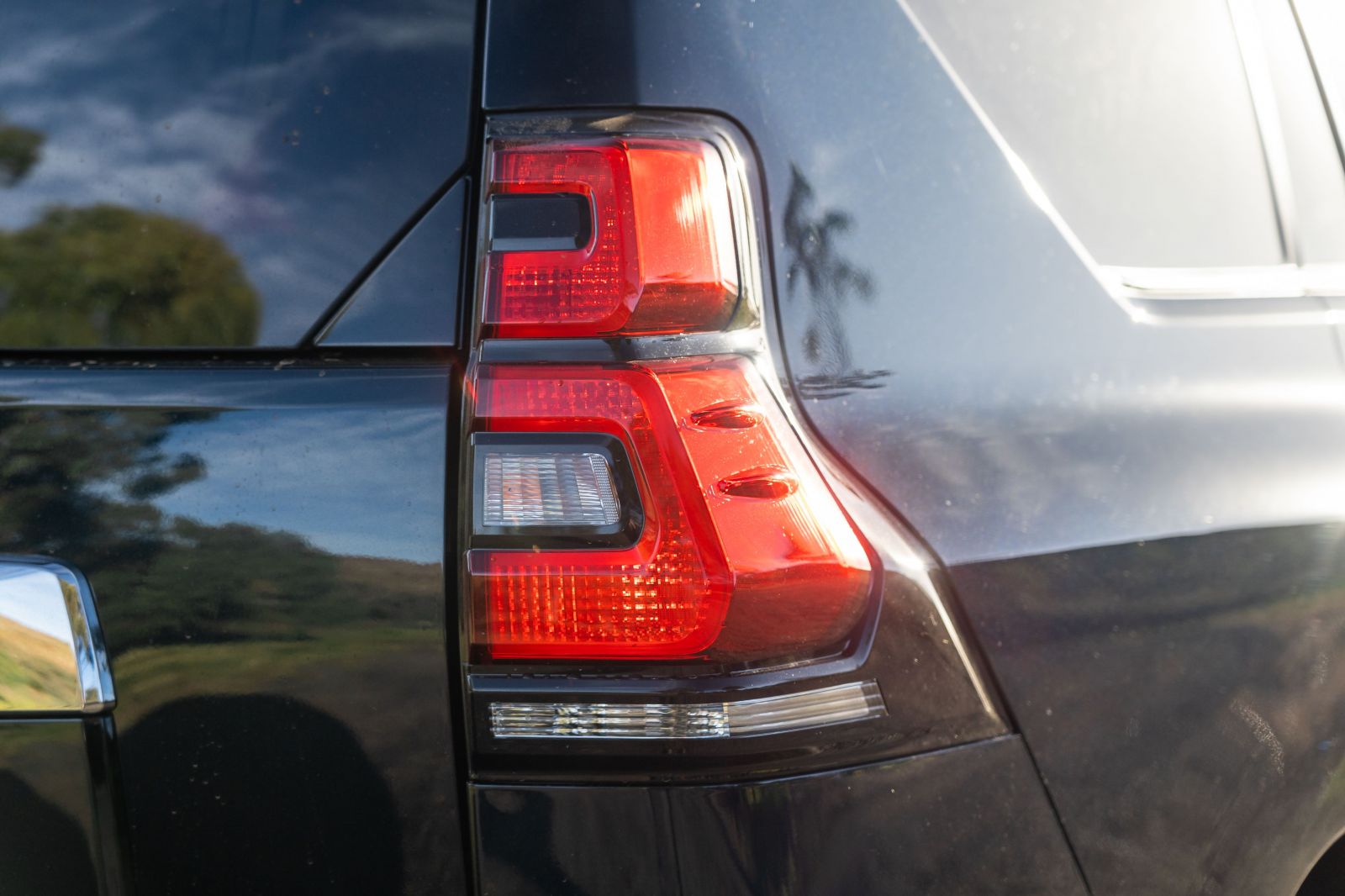
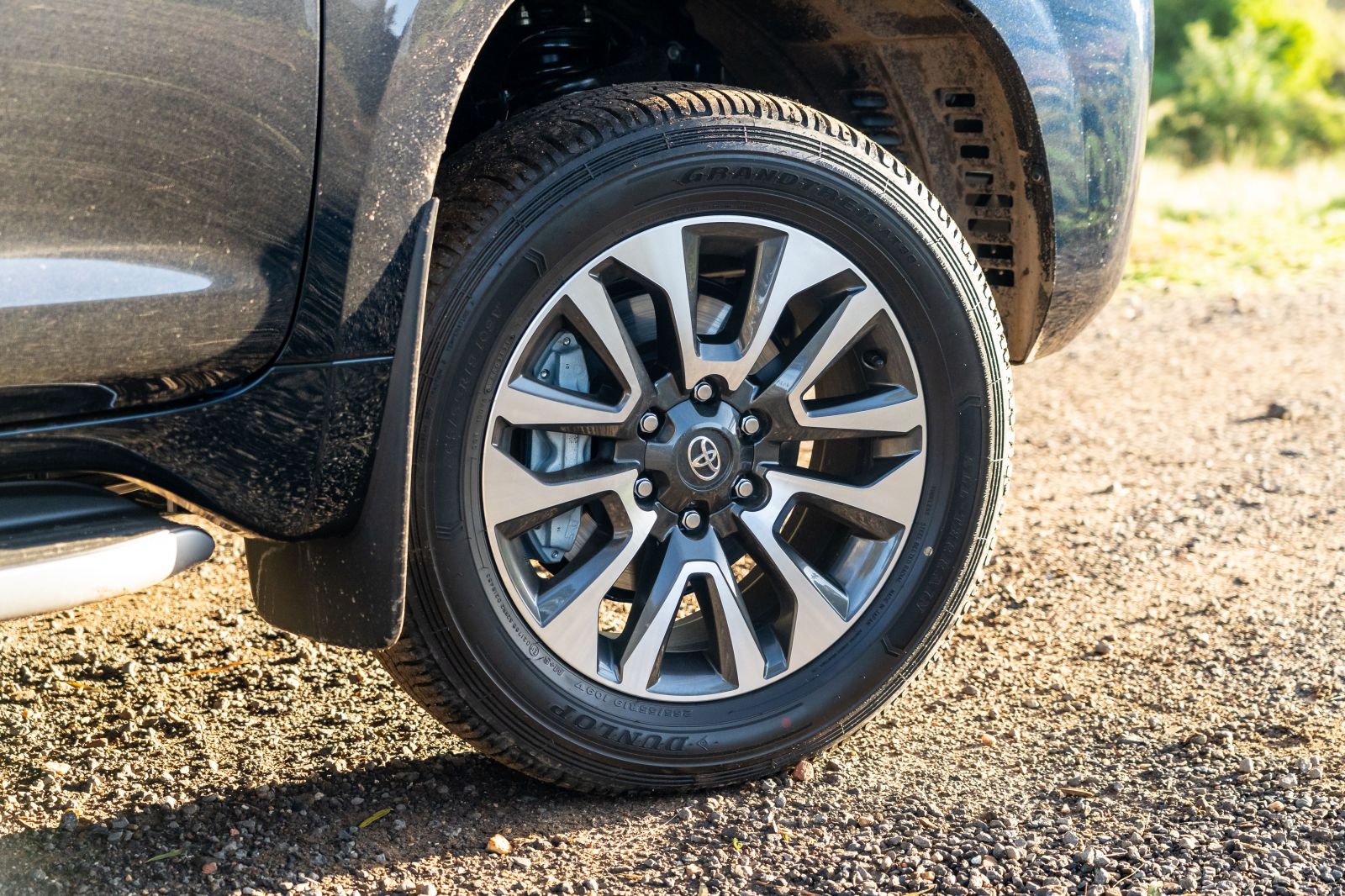
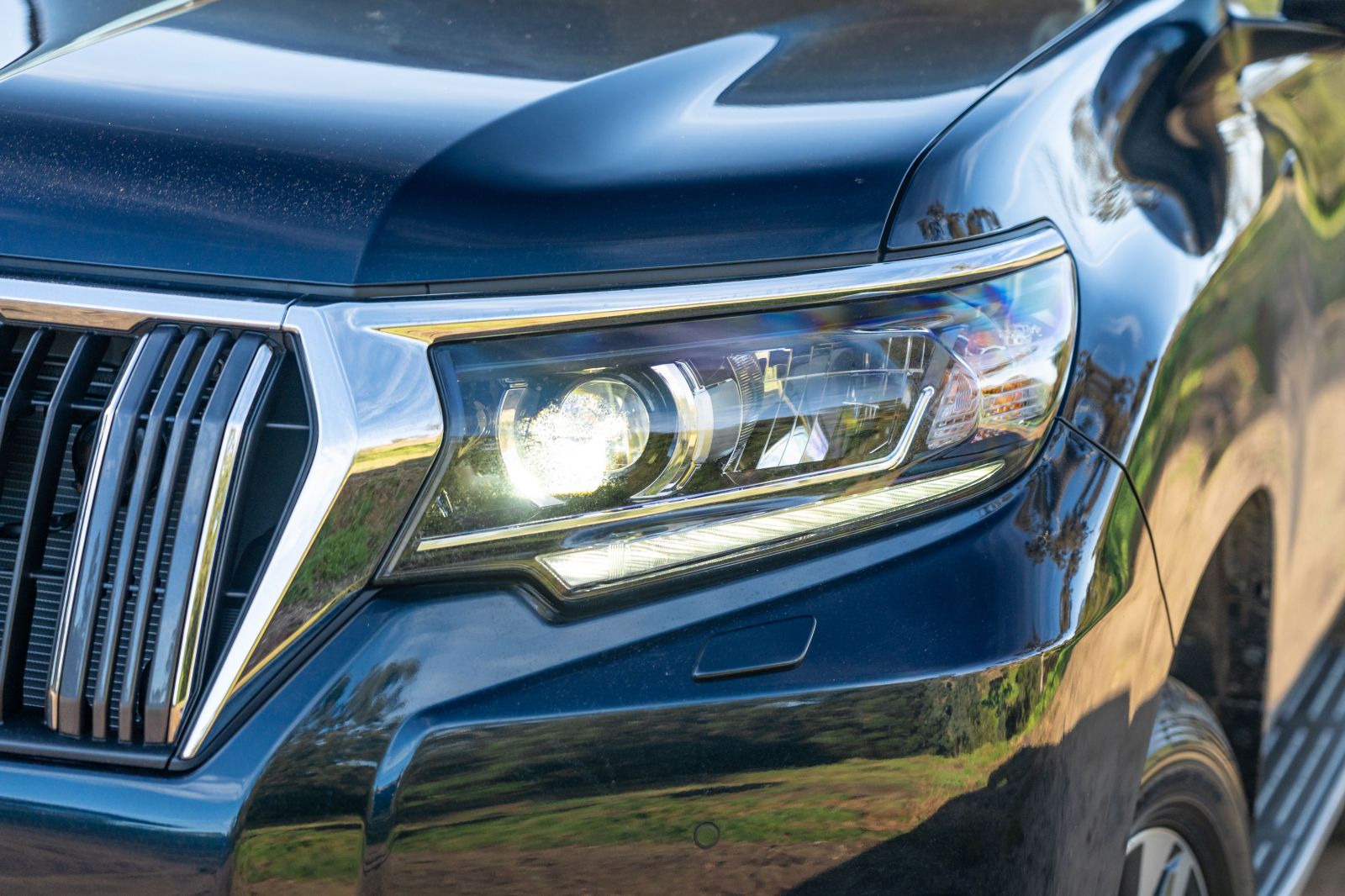
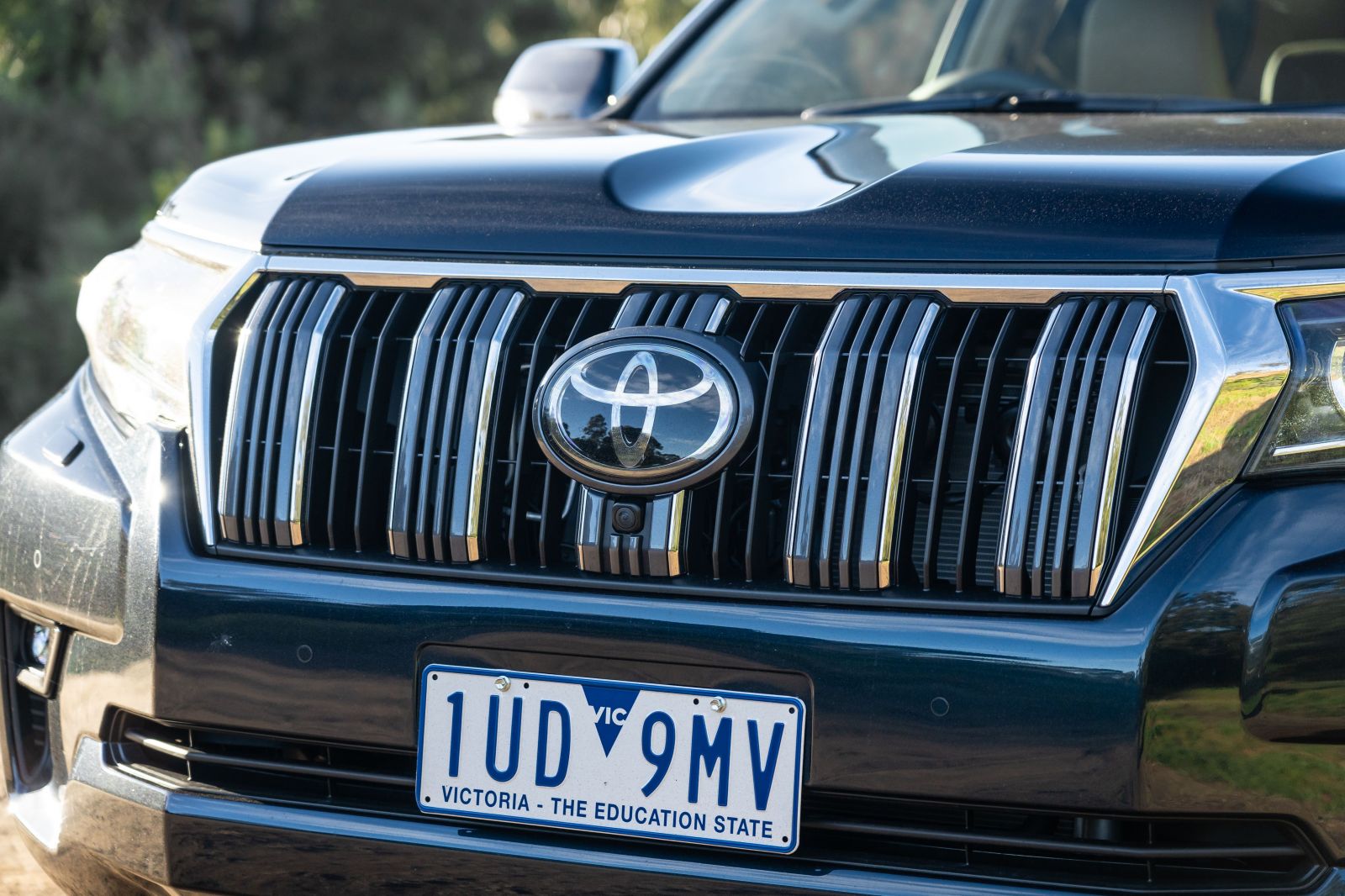
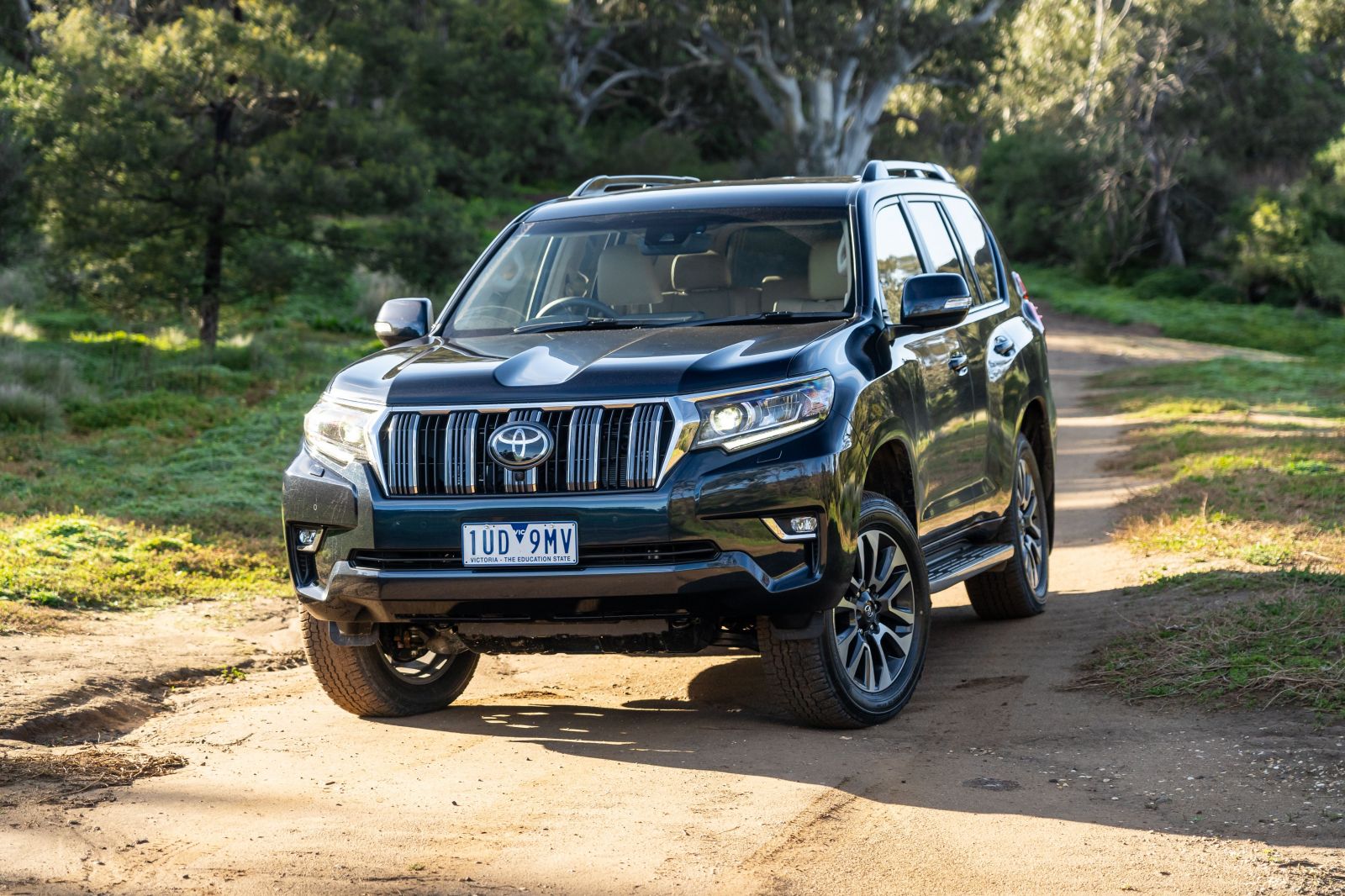
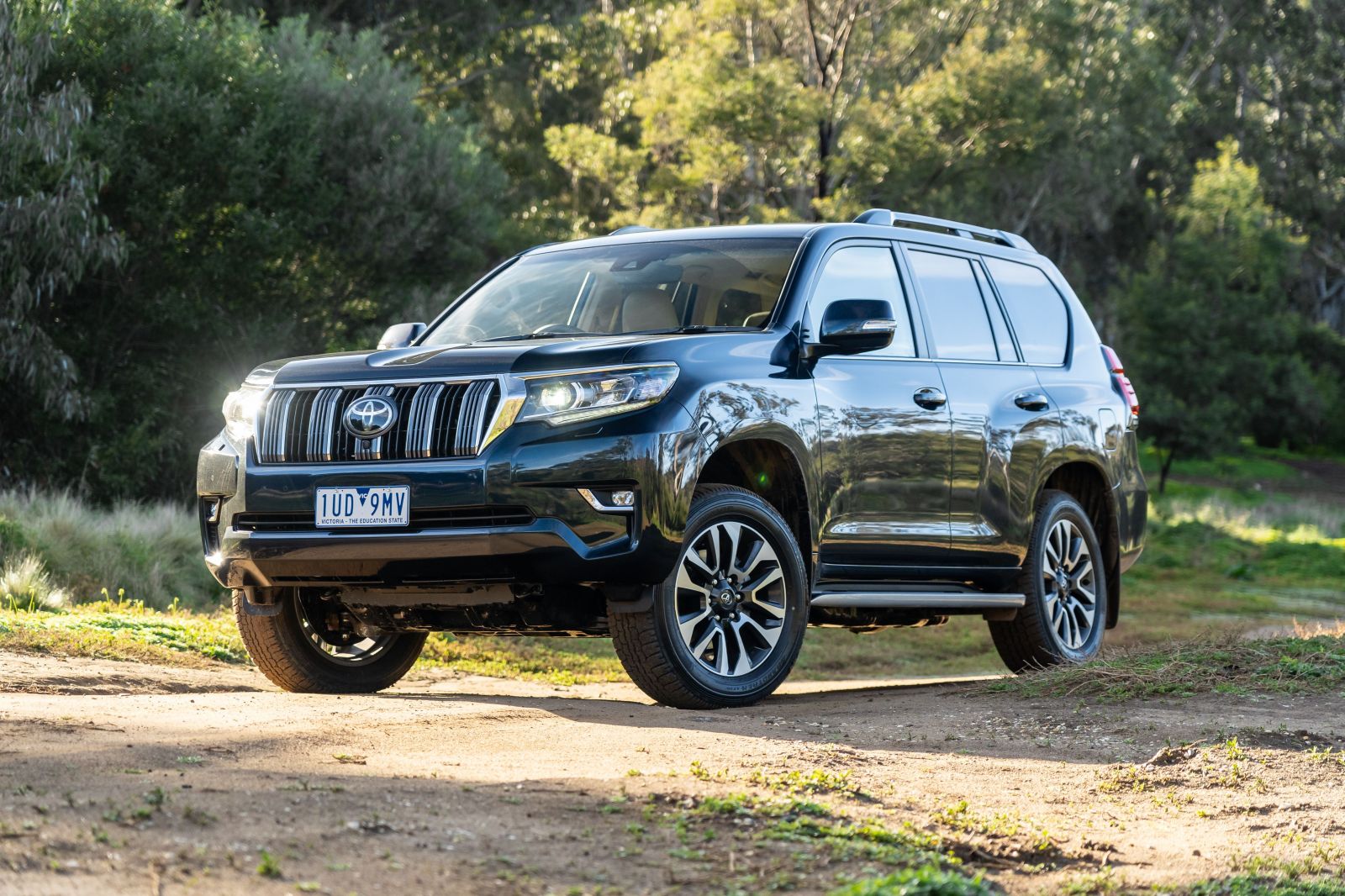
View 45 images
The current-generation Prado has been on sale in Australia since 2009, with a facelift coming in 2013 and then a second refresh launching in 2017.
Overall the aesthetic hasn't changed. It's a big, boxy off-roader with squared-off, chunky proportions and a lofty ride height with chubby tyres.
All models get LED daytime running lights and alloy wheels, and the full-size spare is mounted as standard on the tailgate to allow for the long-range fuel tank setup that includes an 87L main tank and 63L sub-tank for 150L in total
However, if you prefer a cleaner rear end, you can opt for the spare to be stored under the rear floor in the GXL and above, dubbed the 'flat tailgate pack' which also brings an opening glass hatch but removes the 63L sub-tank.
GXL and above also get bi-LED headlights to match the LED daytime running lights, as well as side steps for easier entry/exit.
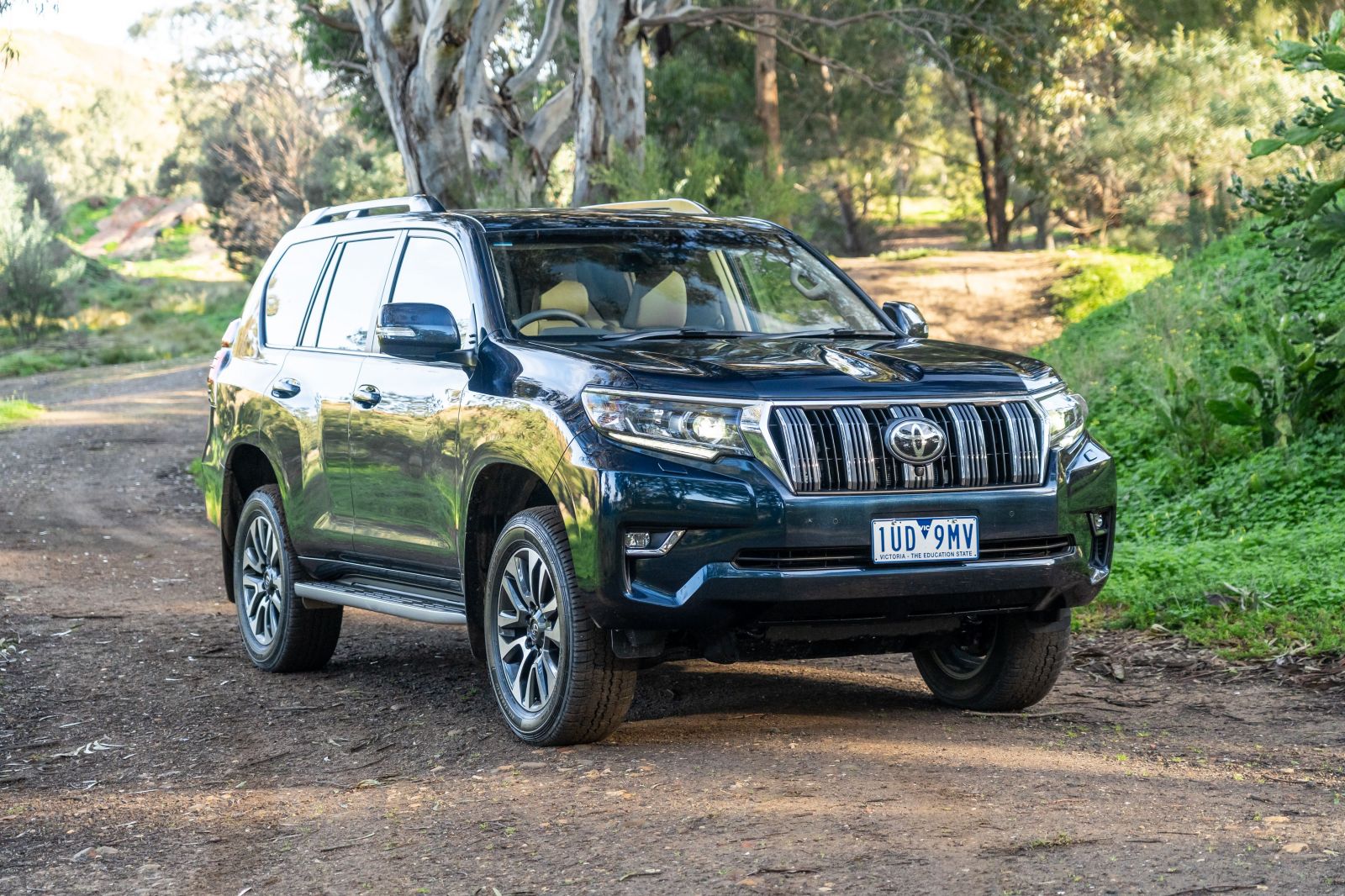
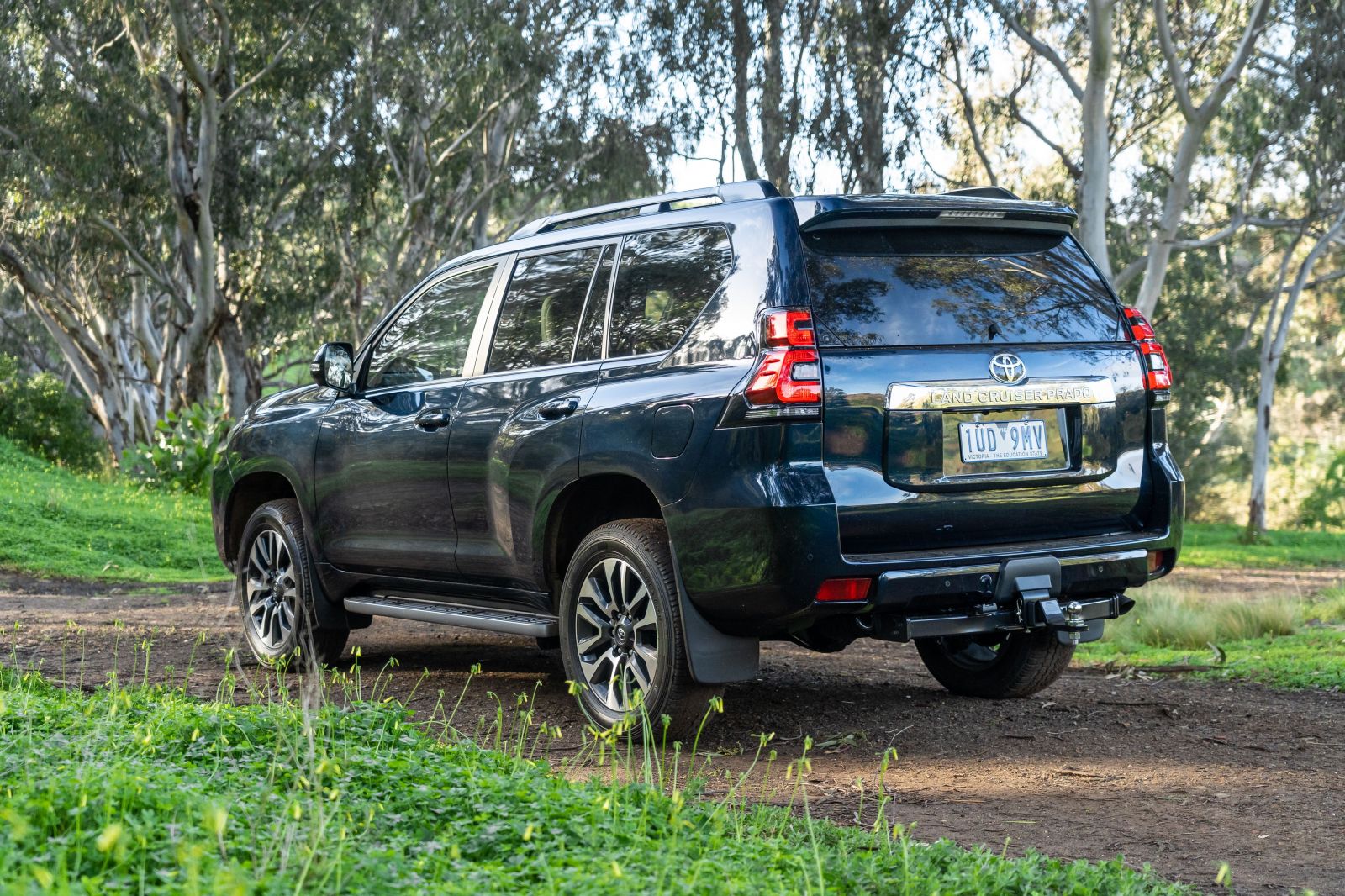




View 6 images
The interior is classic Prado. Woodgrain on the steering wheel, dashboard and doors (in Kakadu spec), expanses of space, a centre stack full of four-wheel drive controls, and a fridge in the centre console.
Visually you won’t spot many differences between the current LandCruiser Prado and the 2019 model. The key differences sit with an updated infotainment unit that features different buttons on its side flanks and a new operating system.
The rest of the centre stack is virtually the same as it has been for years with digital automatic climate control screens and a section beneath dedicated to four-wheel drive controls.
The updated infotainment system consists of an 9.0-inch colour display fitted with AM/FM and DAB+ digital radio linked to a 14-speaker JBL branded sound system.
It now includes Apple CarPlay and Android Auto smartphone mirroring technology. It requires a cable and both technologies take up the entire screen. They both work well, but were slightly laggy when we tested them. That goes for the main infotainment interface as well – it can feel a little slow during transitions between screens and during entry of navigation destinations.
Strangely there’s just one USB port in the first row, which means it’s out of action when using smartphone mirroring and you’ll need to find a 12V adaptor to charge other USB devices.
Leg and headroom in the first row is good and creature comforts like heated and cooled seats, plus a fridge in the centre console, make long-distance cruising in the Prado Kakadu a breeze. You’ll hate us for this but we think the woodgrain looks cool, too.
Knee and headroom in the second row is excellent for adults. Toe room is a little tight and the floor sits a little high so you feel like you’re sitting upright much of the time. Adults to one side, there’s a stack of room in the second row for kids.
ISOFIX points on the two outboard seats are joined by top tether points for all three seats in the second row.
Access to the third row involves sliding the second row forward and tilting the seat back forwards. The third row can then be electrically lifted into position for access.
There’s ample room in the third row for children, but adults will find the space a little compromised. The second row can be slid forward to accommodate extra room in the third row though, so the space can be customised to afford more fit.
Cargo space comes in at 120 litres behind the third row with the third row erect, 620 litres with the third row folded into the floor and 1833 litres with the second row folded flat. There’s a 230V power outlet in the rear too – very handy if you’re out camping.
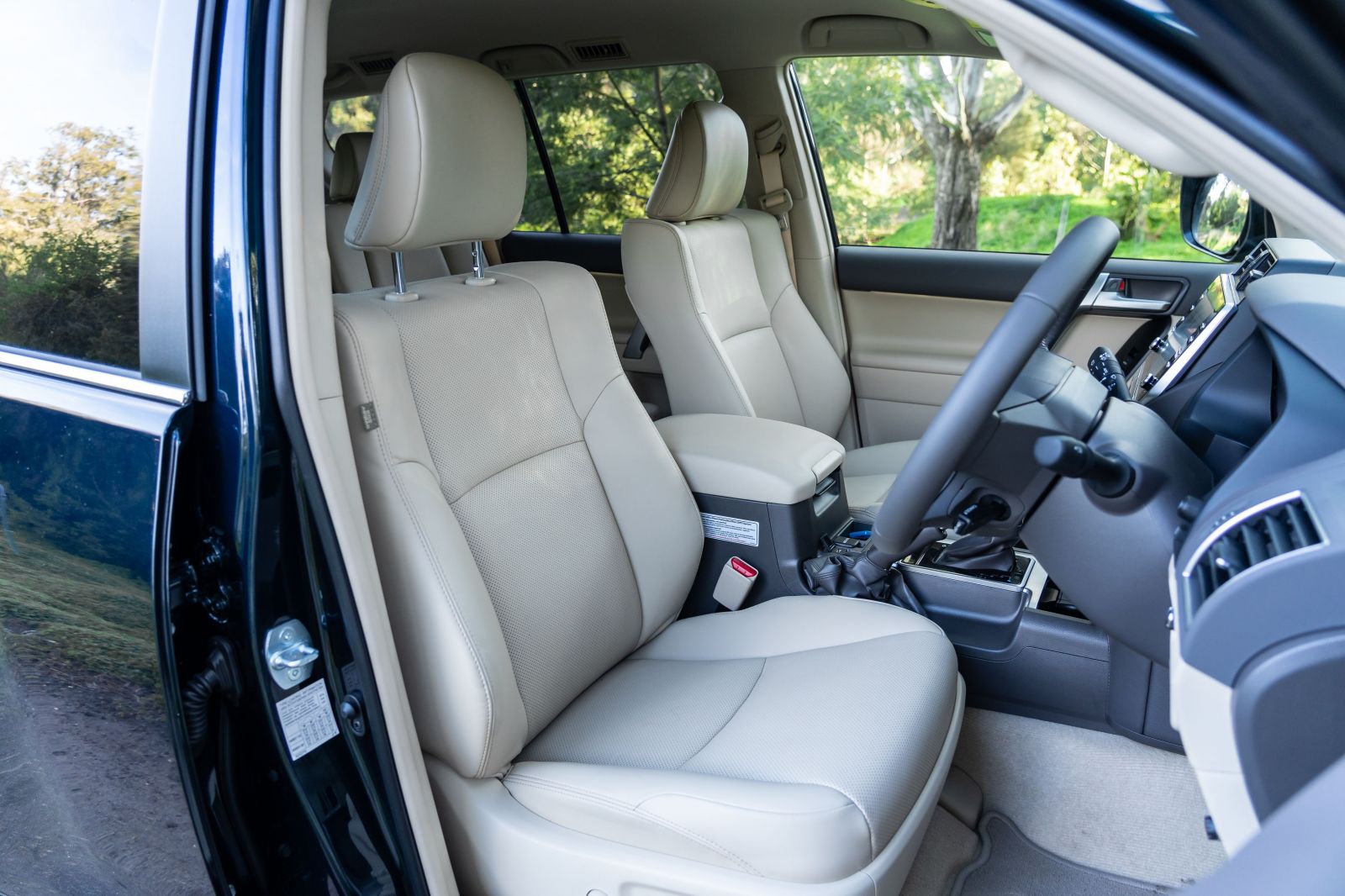
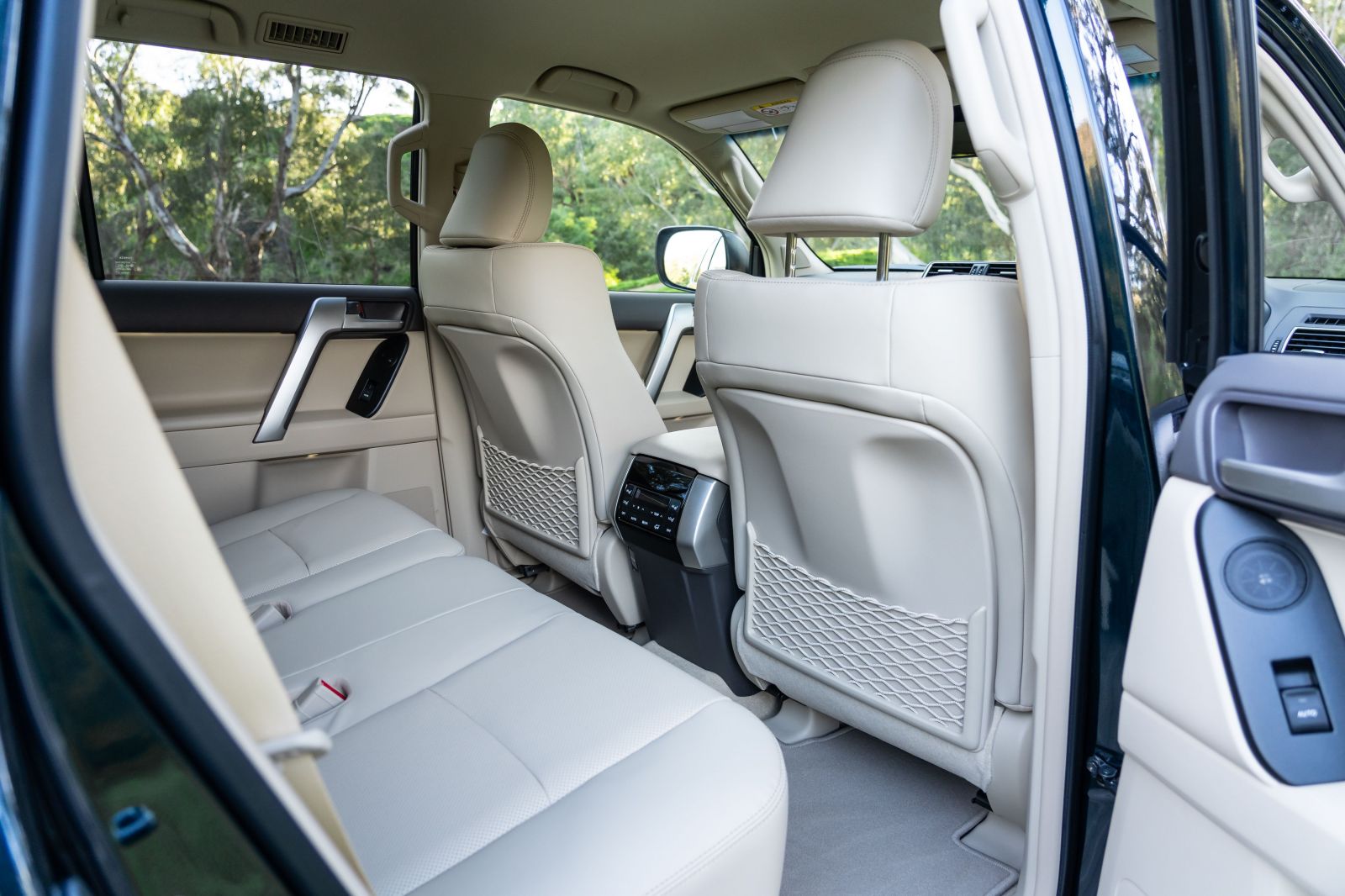
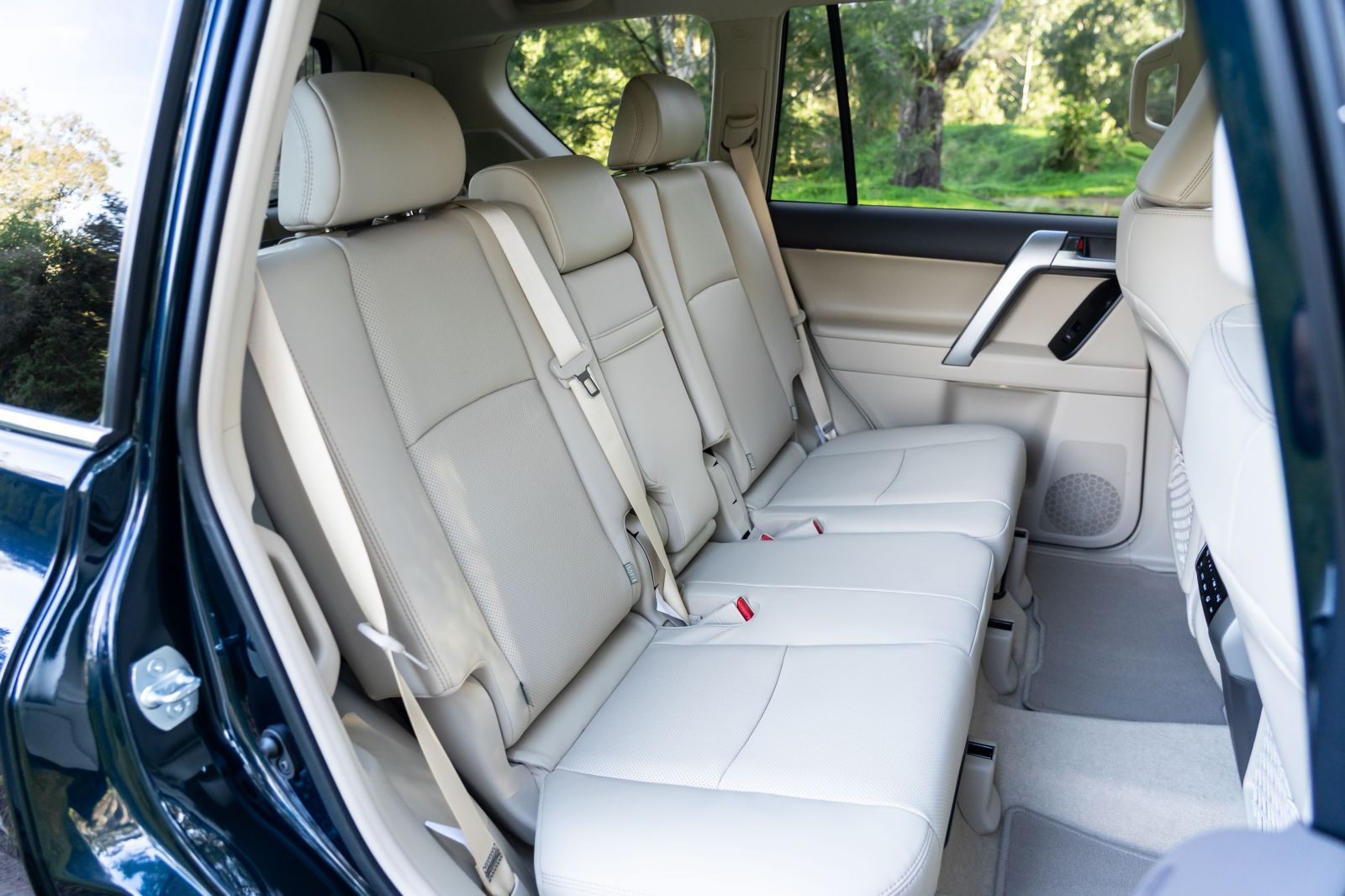
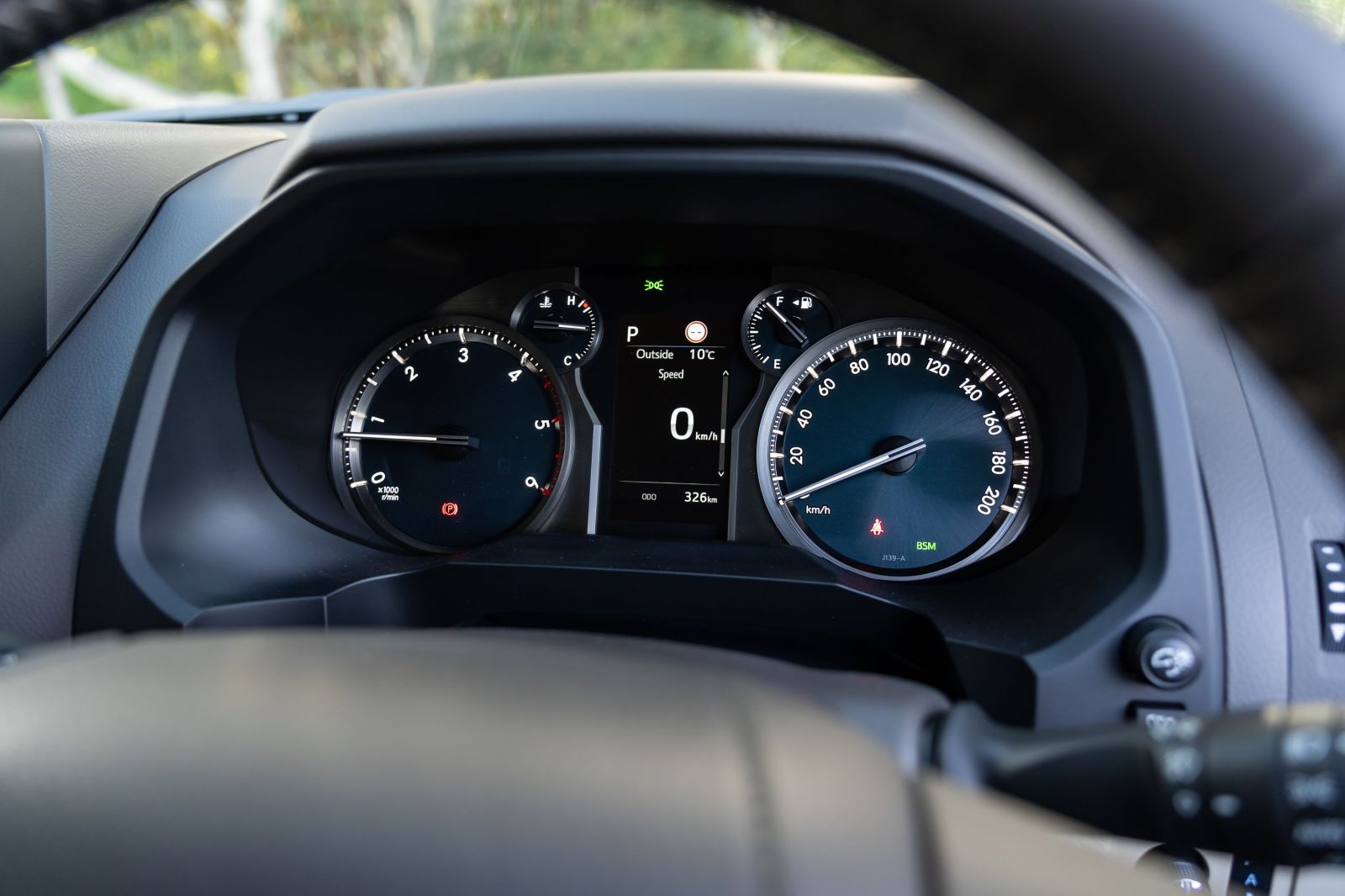
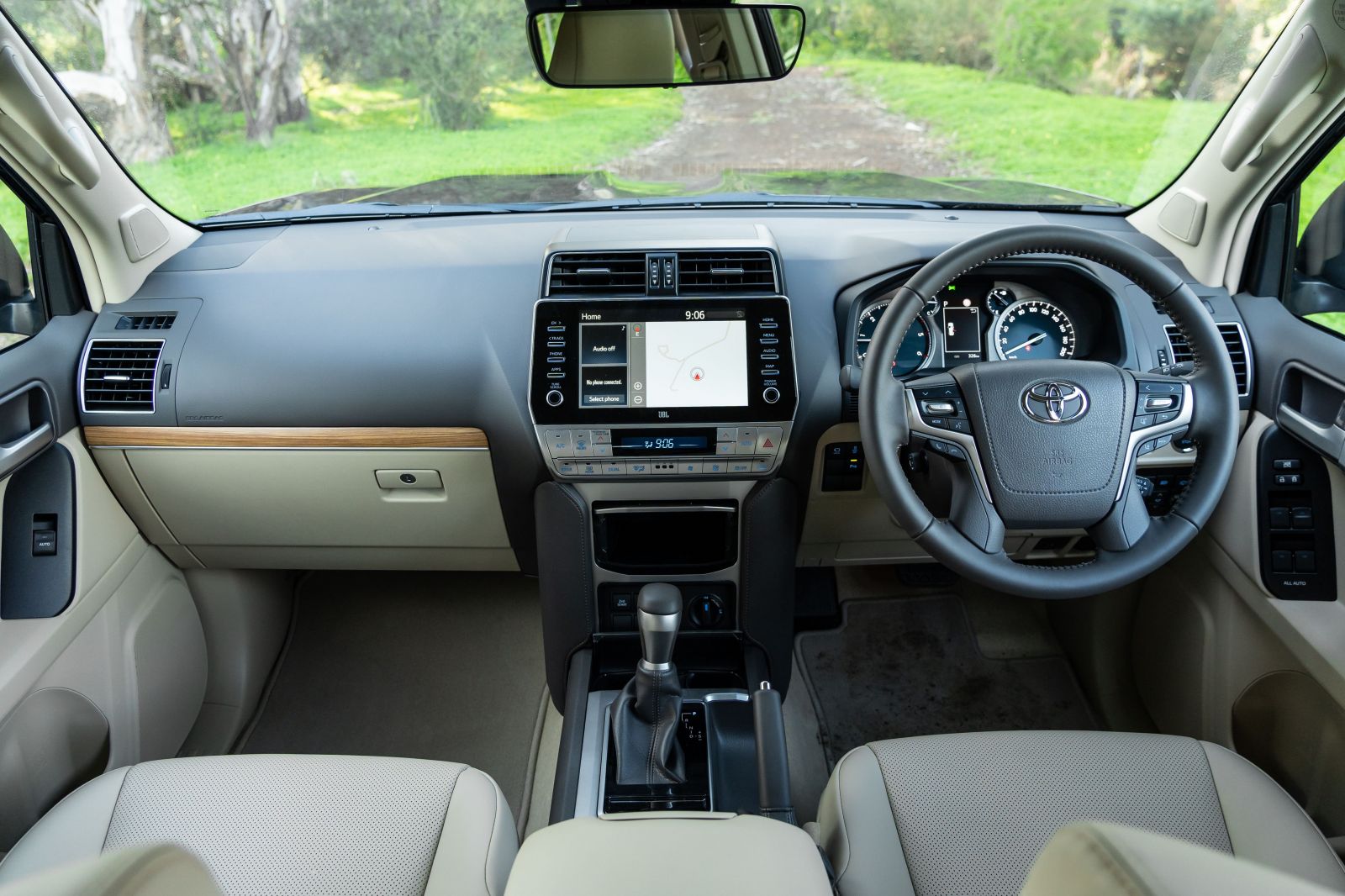
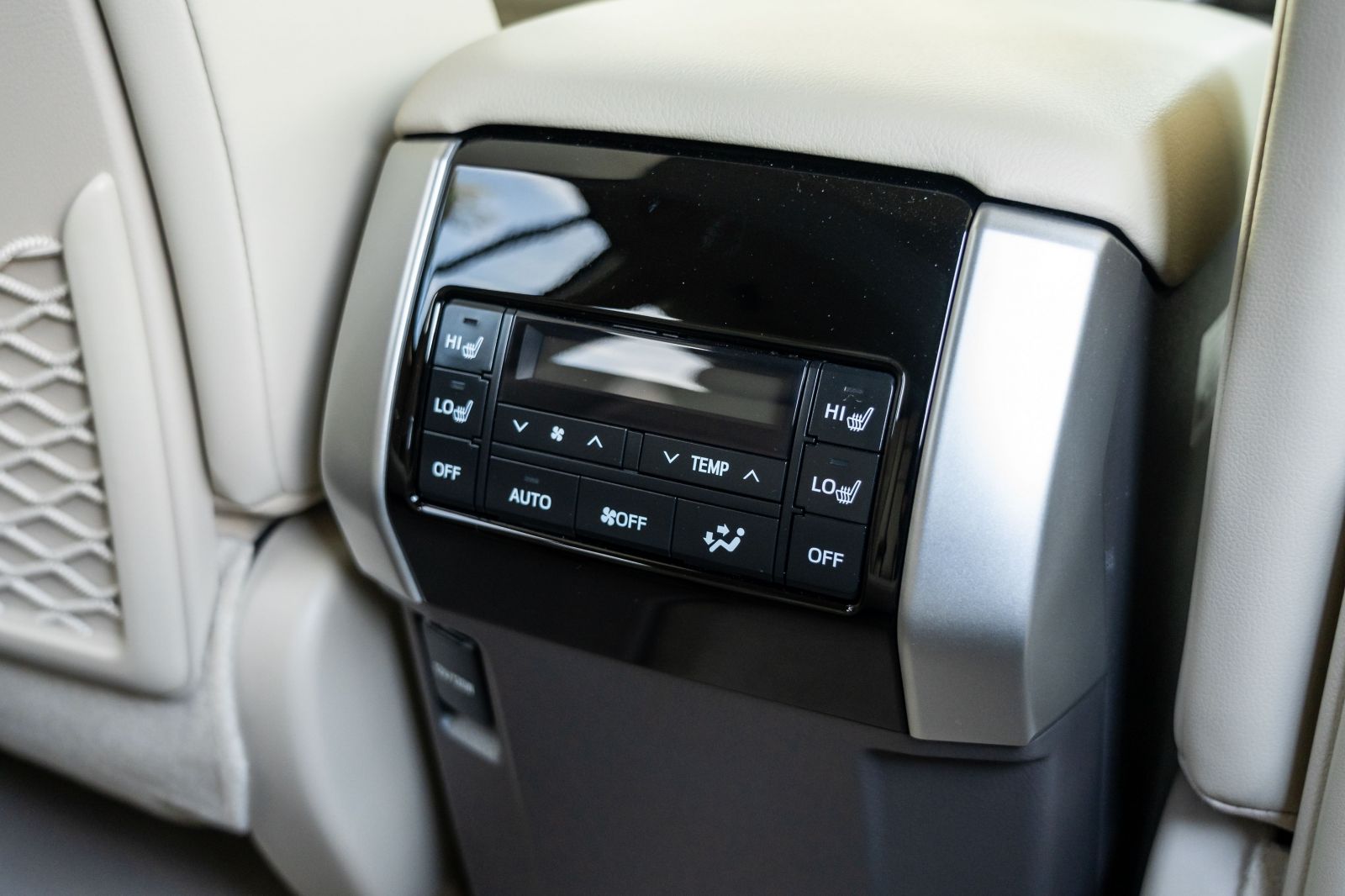
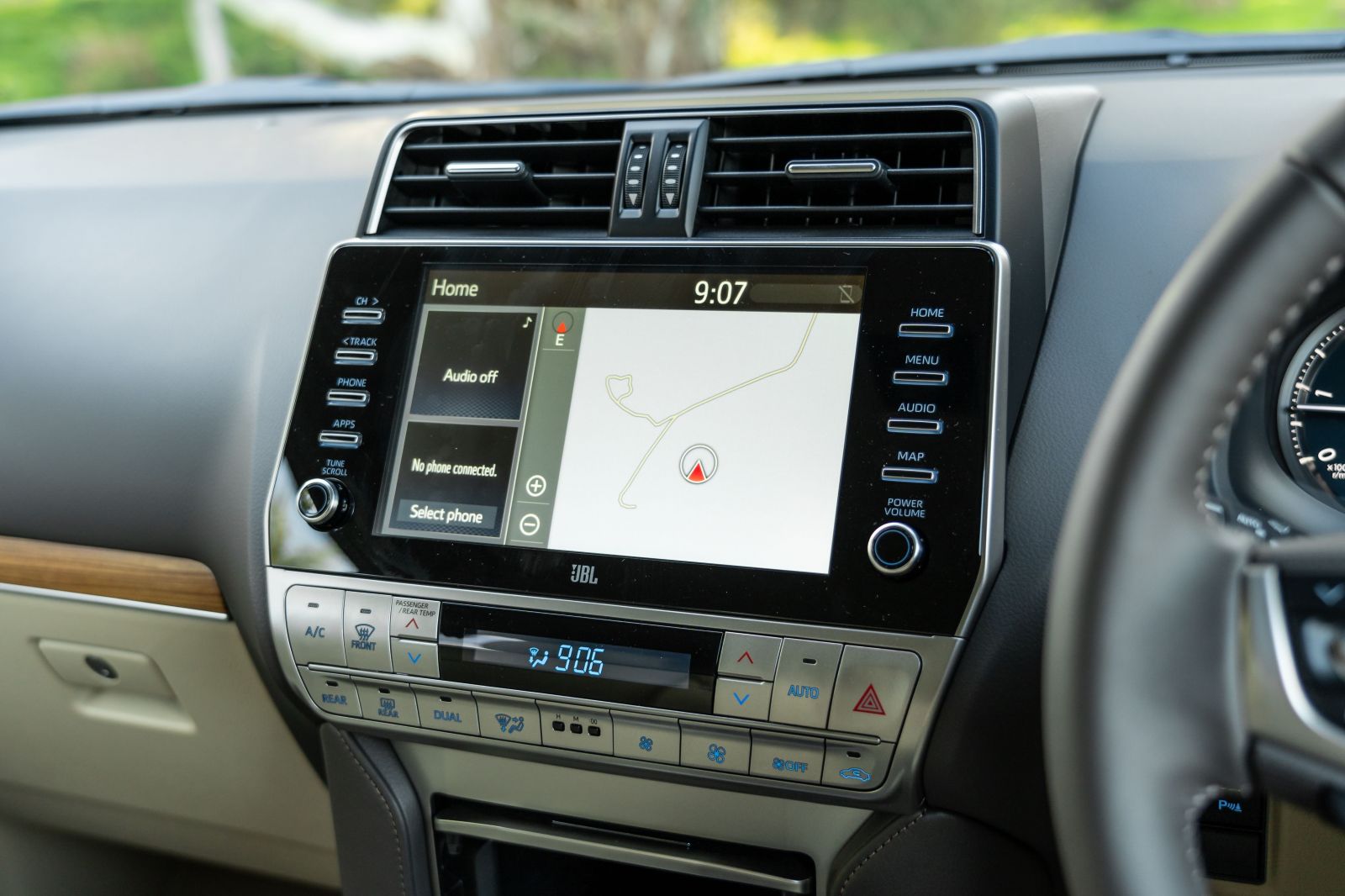
View 7 images
The Toyota Prado wears a five-star ANCAP safety rating based on tests conducted in 2010.
When it was first tested it achieved an overall score of 35.11 out of 37 against older crash test criteria. It's unclear how it would perform against the latest, most stringent requirements.
All models come standard with the following :
Toyota claims the Prado's 2.8-litre four-cylinder turbo-diesel uses 7.9L/100km on the combined cycle – though our own testing returned closer to 10L/100km in real-world use.
| Toyota LandCruiser Prado | Fuel Type | Combined |
|---|---|---|
| 2.8L, 6-speed auto, 5-door SUV, Diesel, 4x4 | Diesel | 7.9 L/100km |
What are the running and servicing costs of a Toyota LandCruiser Prado?
As with the wider Toyota line-up, it’s backed by a five-year, unlimited-kilometre warranty.
The Prado requires maintenance every six months or 10,000km – whichever comes first.
Each of the first six services (or each scheduled service in the first three years of maintenance) will cost $260.
Our expert take on Toyota LandCruiser Prado drivability.
Tipping the scales at 2455kg (kerb), the latest engine's extra 50Nm of torque was never really going to make a night and day difference.
But, while the updated engine doesn’t pin you back in the seat, it offers something the last Prado struggled with – confidence behind the wheel.
When you sink the boot in now, there’s a quicker and more urgent surge of torque that doesn’t taper off as quickly. It still takes a little over 11 seconds to travel from 0-100km/h, but it’s the mid-range where you will notice the most difference.
Peak torque kicks in from 1600rpm and flows through to 2800rpm meaning there is a wide band the transmission can lean on before needing to shift back through gears. The six-speed automatic transmission isn’t lightning fast on up or downshifts, but that wide torque band accommodates for in-gear acceleration without hunting through gears.
Toyota hasn’t shifted from hydraulic to electrically assisted steering, so you miss out on the variable steering weight you find on most of the Prado’s competitors, along with safety technology like a proper lane-keeping assistant (this uses a system that grabs the brakes momentarily to move the car back into line).
That means the steering can feel a little heavy at low speeds, with the rack retaining a lack of feel about centre at city and highway speeds.
Suspension comes in the form of a double wishbone up front, a four-link setup at the rear, and height-adjustable air springs on the rear axle. There’s also adaptive damping with three suspension settings to match the terrain being driven on, and anti-roll bars on the front and rear axles.
In and around the city the Prado feels smooth and comfortable. It doesn’t feel as brittle or rough as some of the ute-based SUVs at low speeds and that’s thanks to a slightly more sophisticated suspension setup.
Out on the open road and at highway speeds the ride is good, but it can feel a little brittle at times. Corrugations and bumps on country roads at highway speeds tend to translate through the cabin and aren’t adequately isolated by the suspension. It’s certainly not the end of the world, but you will notice it over longer country drives.
Speaking of which, given its reputation, the LandCruiser Prado’s off-road credentials match its rugged appearance.
We’re talking about 219mm of ground clearance, 30.4-degree approach angle, 23.5-degree departure angle and a 700mm wading depth, as well as a centre and rear differential lock.
In addition to these systems, the LandCruiser Prado comes with KDSS (Kinetic Dynamic Suspension System), which is a hydraulic decoupler for the anti-roll bars. KDSS activates the anti-roll bars to improve handling on-road, and can disconnect them when extra wheel articulation is required.
There’s also Crawl Control and Multi Terrain Select system. These features help manage off-road terrain by electronically controlling slip at each wheel based on preset speeds and terrain. For the most part they work well, and are there to serve buyers who may not be entirely confident off-road.
The only downsides to the package are the noisy hill descent and Crawl Control modes, and an inability to enter any of the advanced drive modes or engage the rear differential unless the vehicle is in low-range.
What colours are available for the Toyota LandCruiser Prado
There are 10 available exterior finishes for the Prado line-up, including:
*Premium paints demand a $675 upcharge.

Yukon

RX

Tank 500
Deals available

GX

X5

D90

Patrol

Palisade

MU-X

LandCruiser

Everest
Deal available
Can’t see the car you’re considering?
Is this the right car for you? Out experts buy or not guide.
Overall the 2021 Toyota LandCruiser Prado is more of the same and for those wanting a brand new product, we’re expecting a new-generation Prado in 2022-23. that’s likely to sit on a new platform and come with a range of new engines.
But in the interim, it’s a safe purchase if you’re upgrading an existing Prado and don’t need any surprises.
CarExpert does the hard work to get you the best price. No negotiating, no hidden costs, just expert help and real savings on your next new car.
The cheapest Toyota LandCruiser Prado is the GX that starts from $62,830.
The most expensive Toyota LandCruiser Prado is the Kakadu that starts from $88,998.
The best towing capacity of a Toyota LandCruiser Prado is 3000 kg offered by the following variants: GX, GXL, VX and Kakadu.
The largest Toyota LandCruiser Prado is the GXL which measures 1885mm wide, 4995mm in length and sits 1890mm tall.
The most powerful Toyota LandCruiser Prado is the GXL which has 150kW of power from its 2.8L TURBO DIESEL COMMON RAIL engine.
The Toyota LandCruiser Prado is built in Japan and shipped to Australia.
The heaviest Toyota LandCruiser Prado is the GXL which weighs 2990 kg (kerb weight).
The Toyota LandCruiser Prado uses diesel.